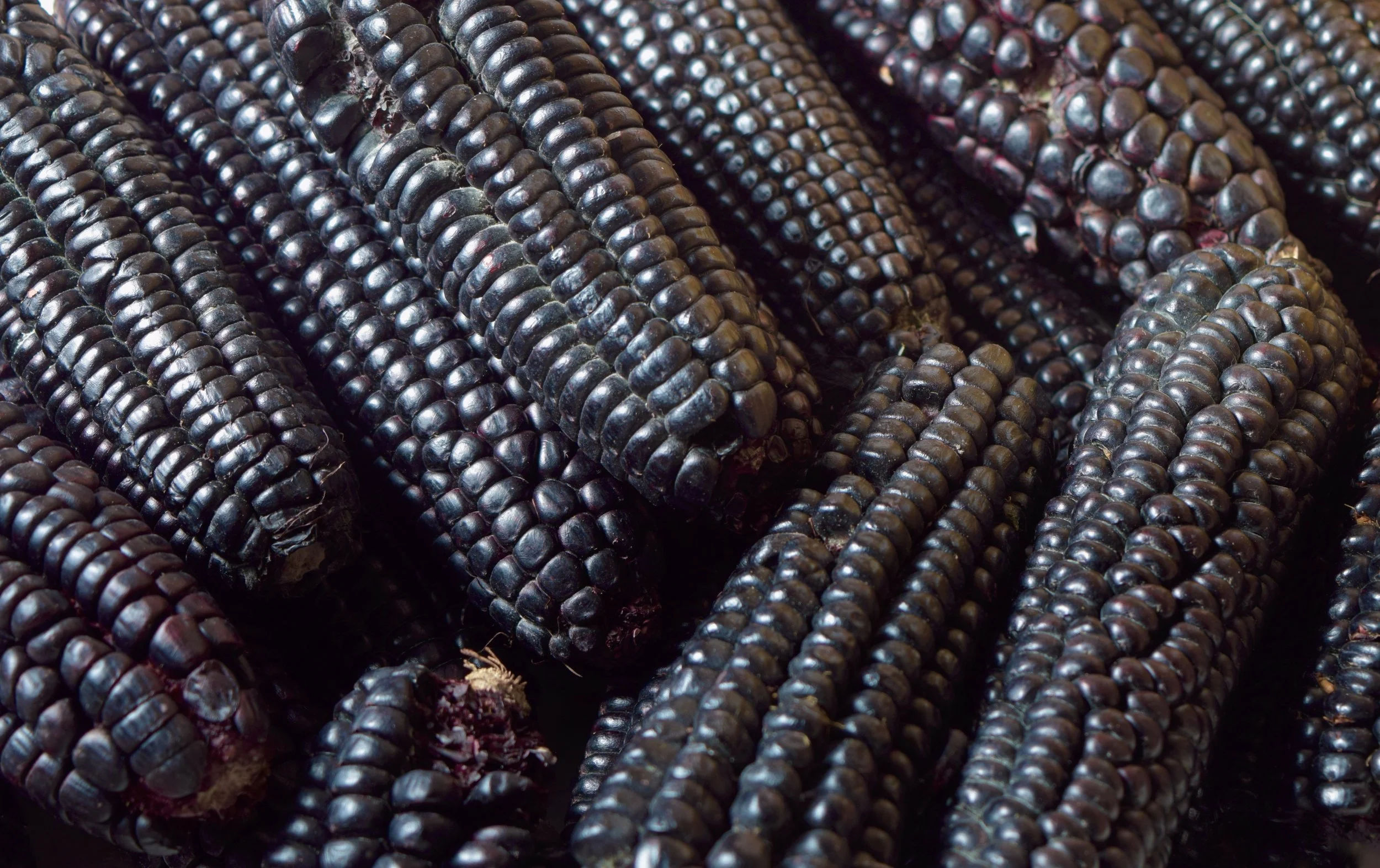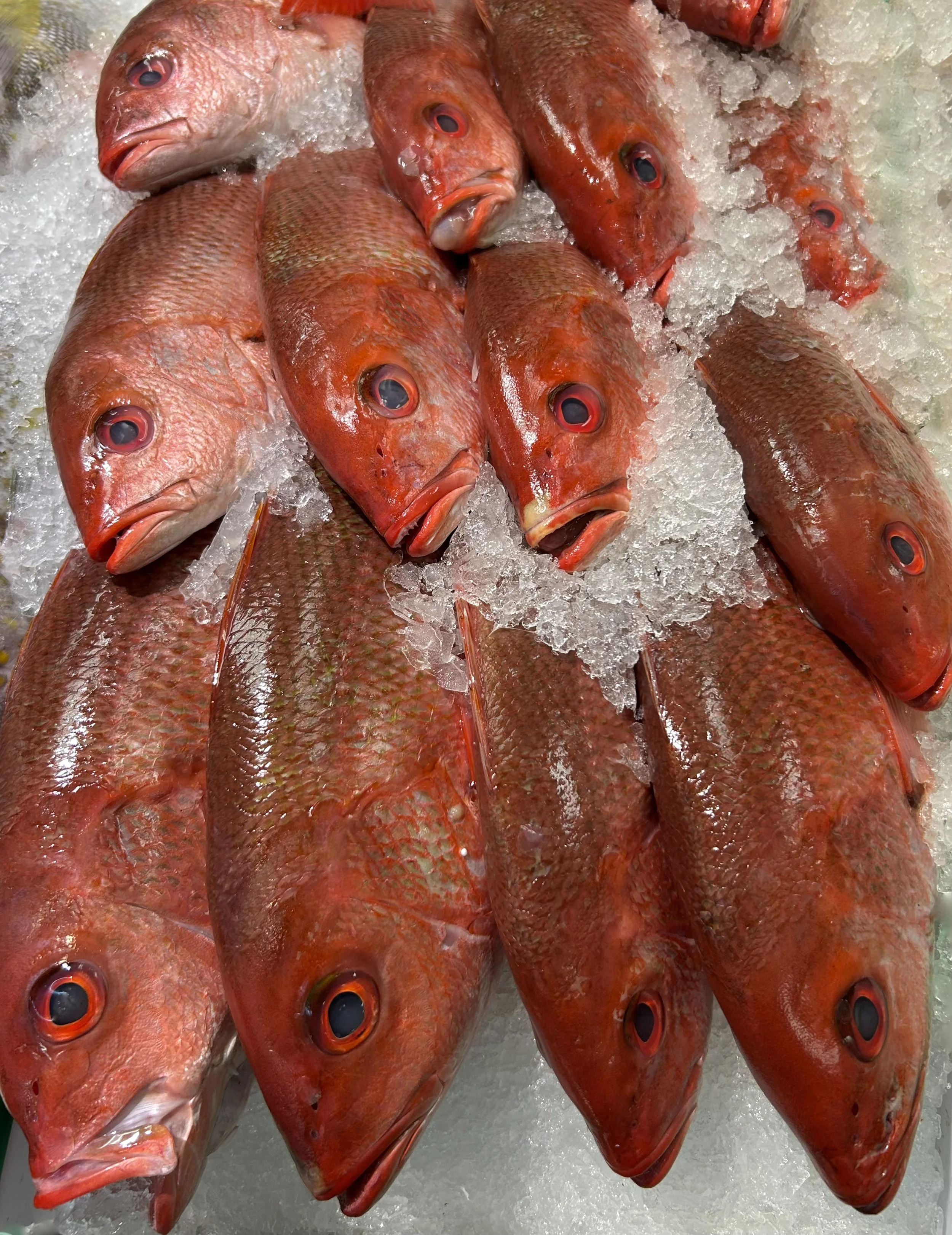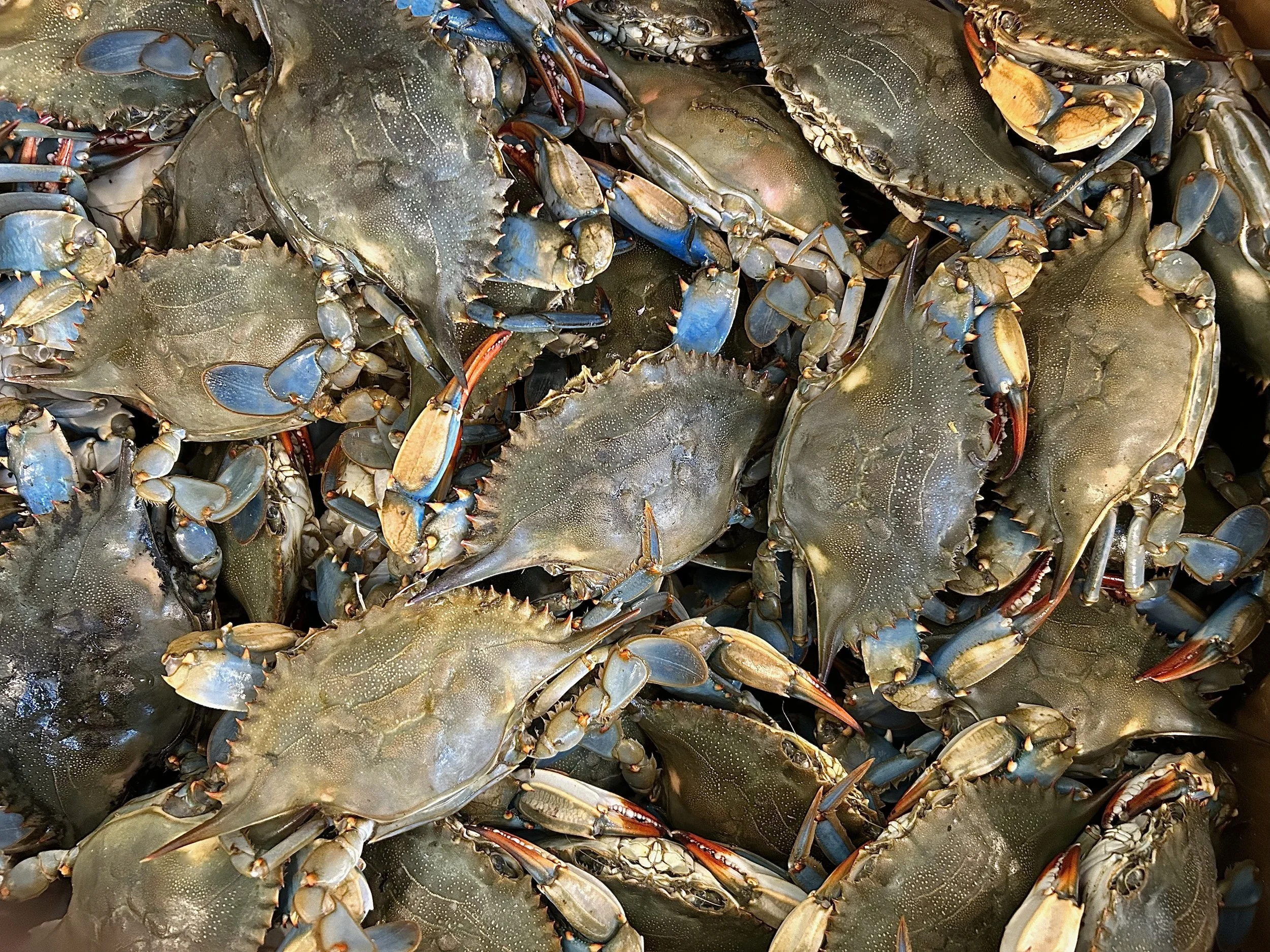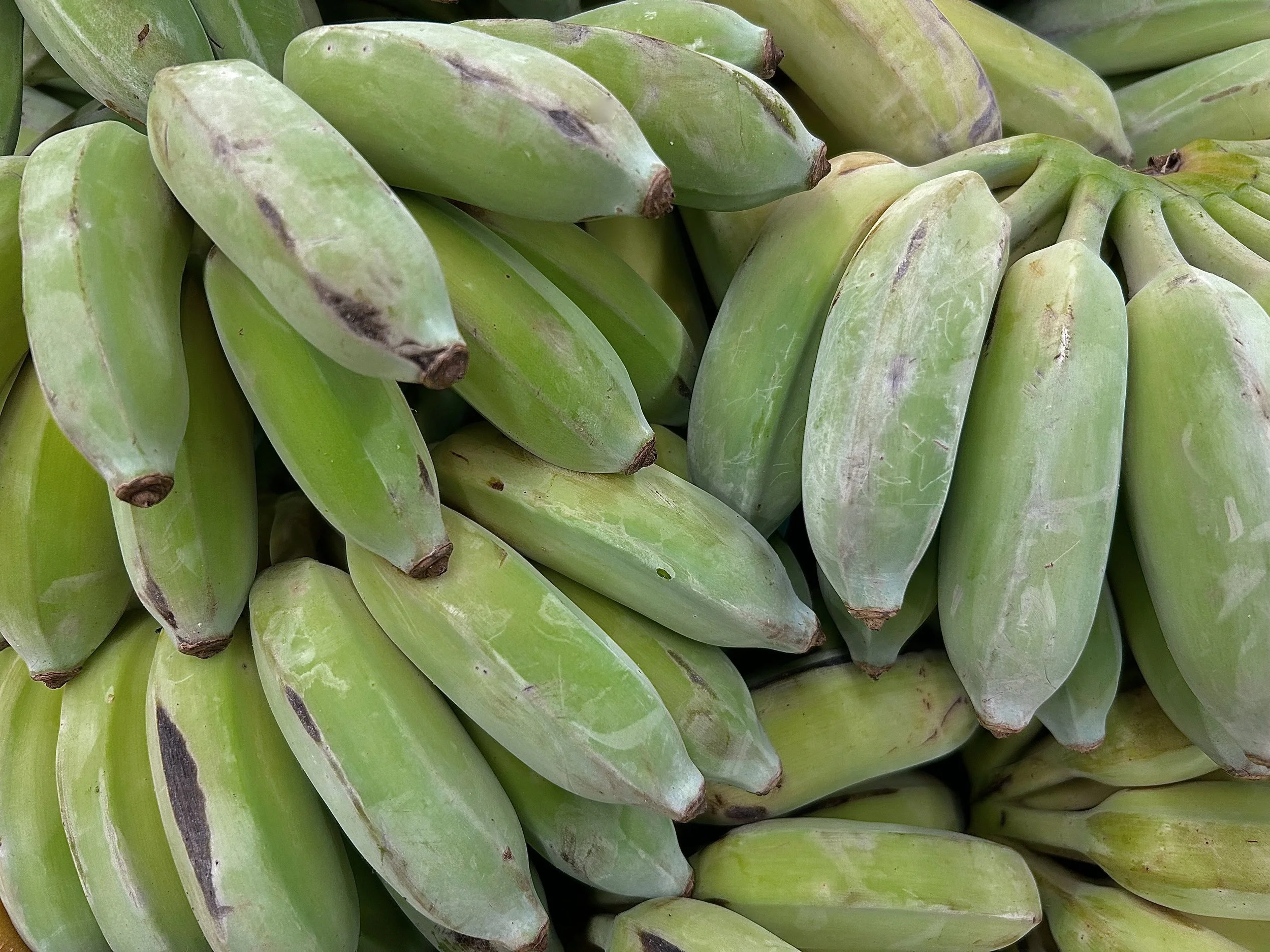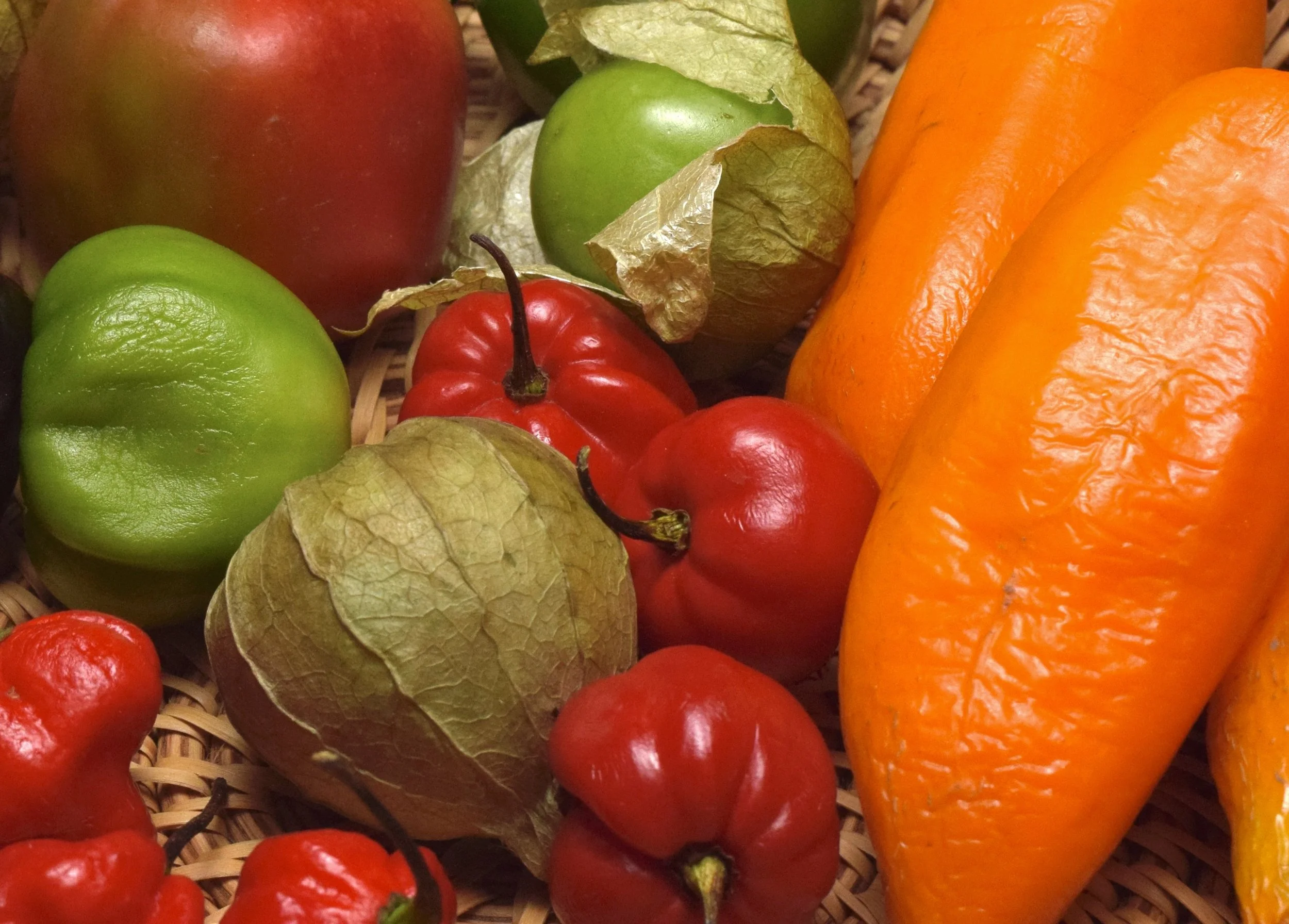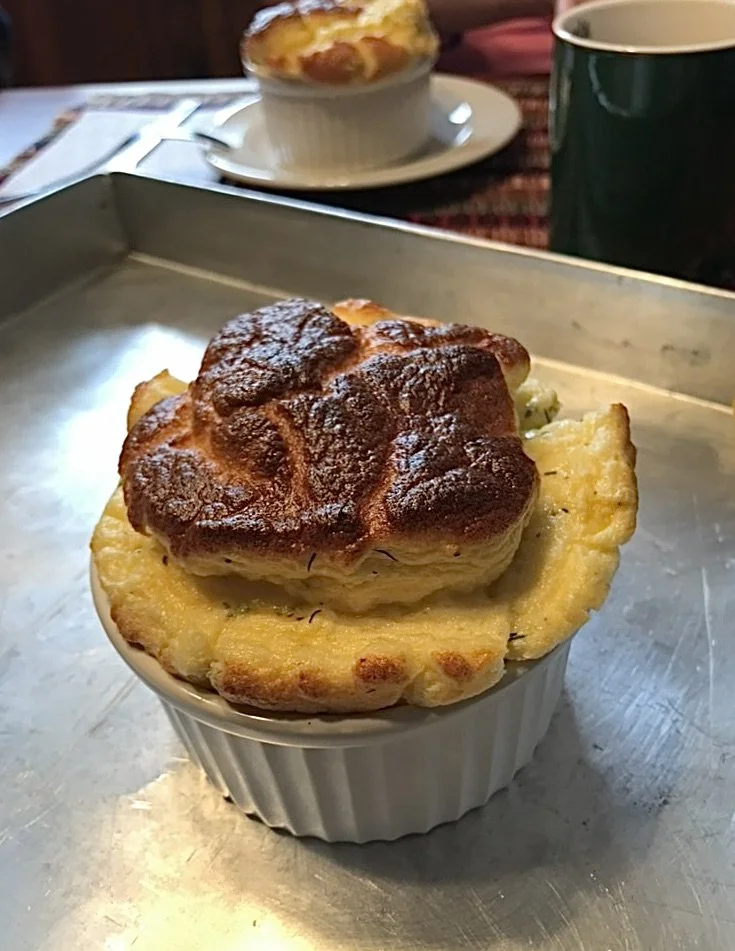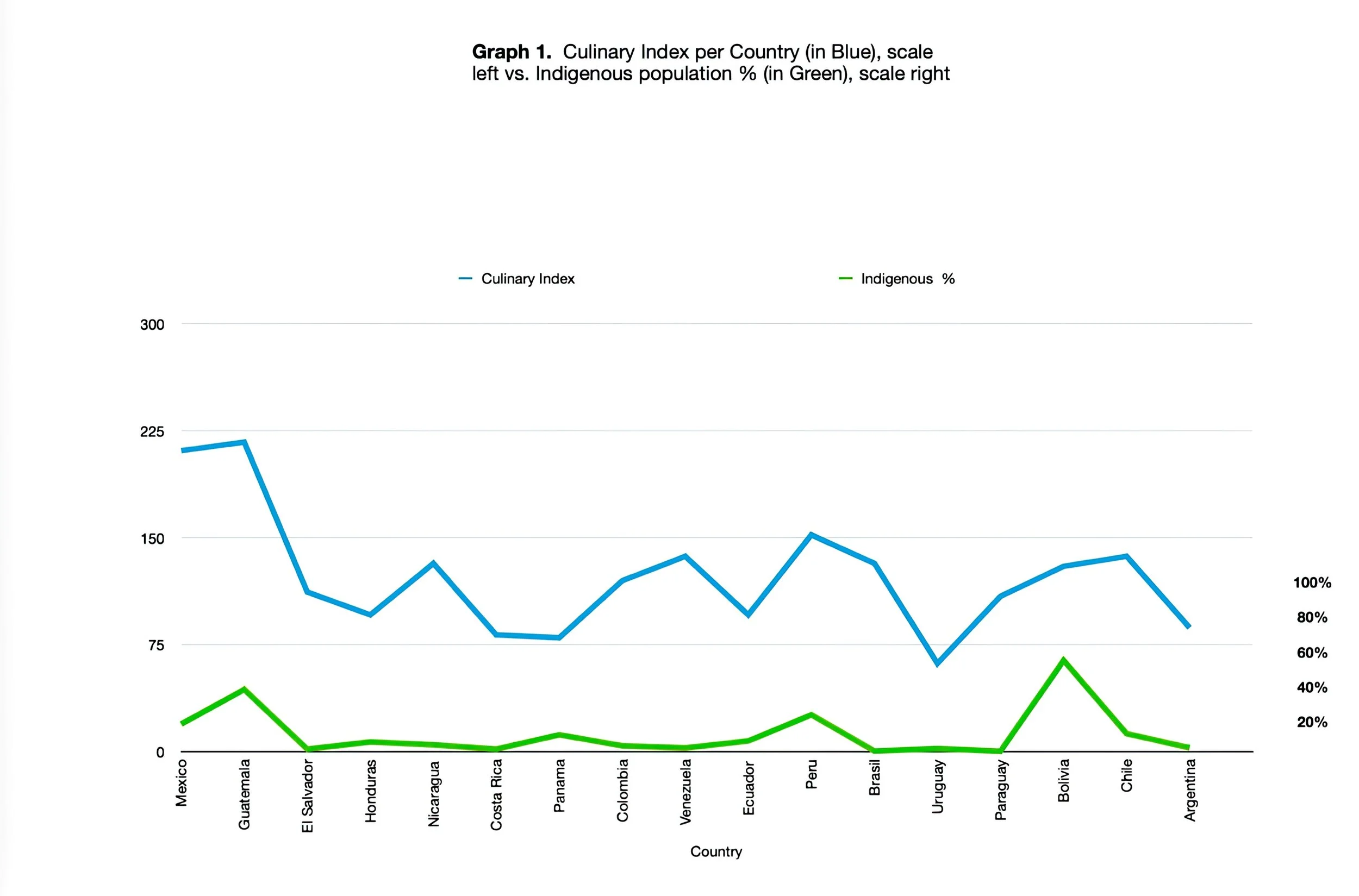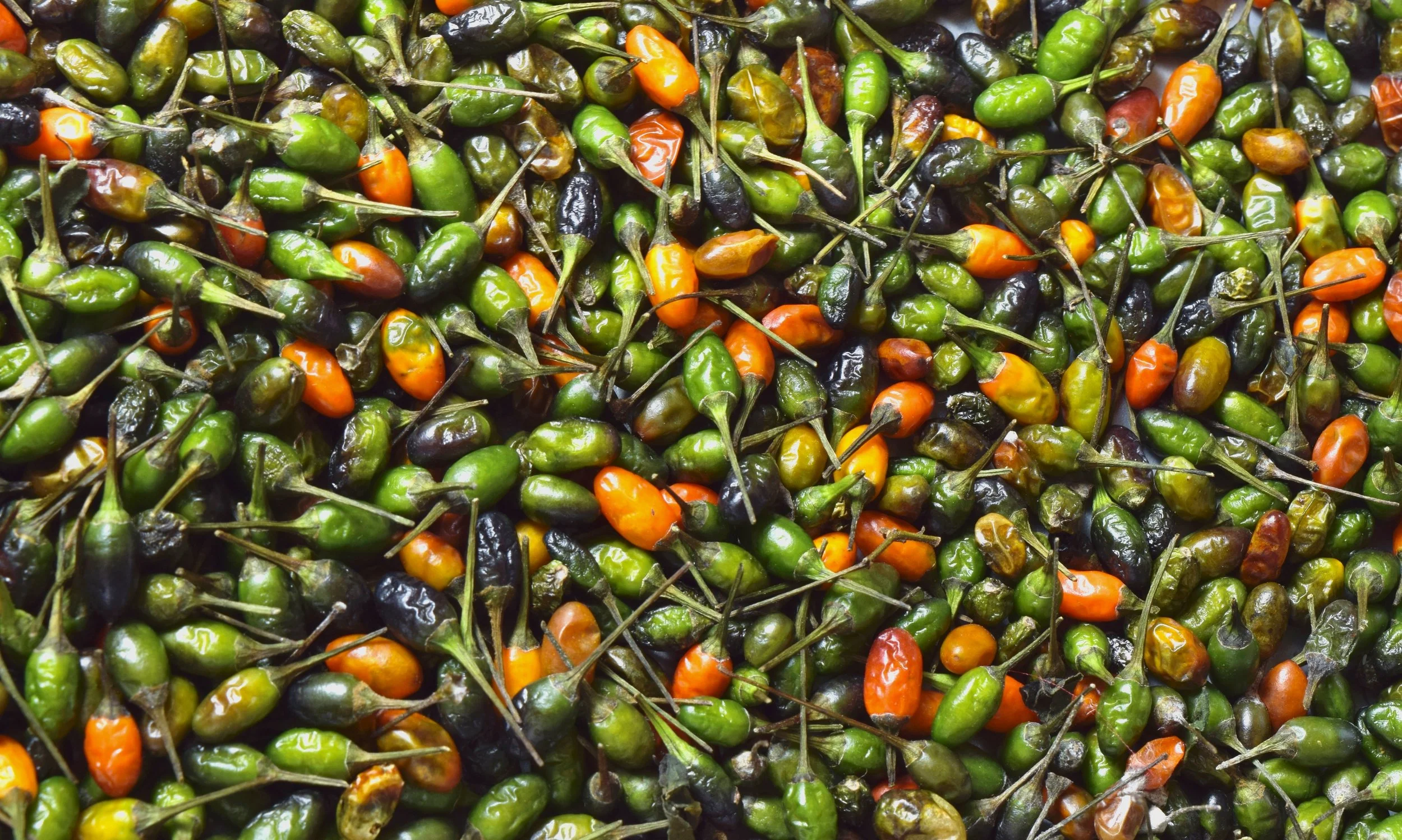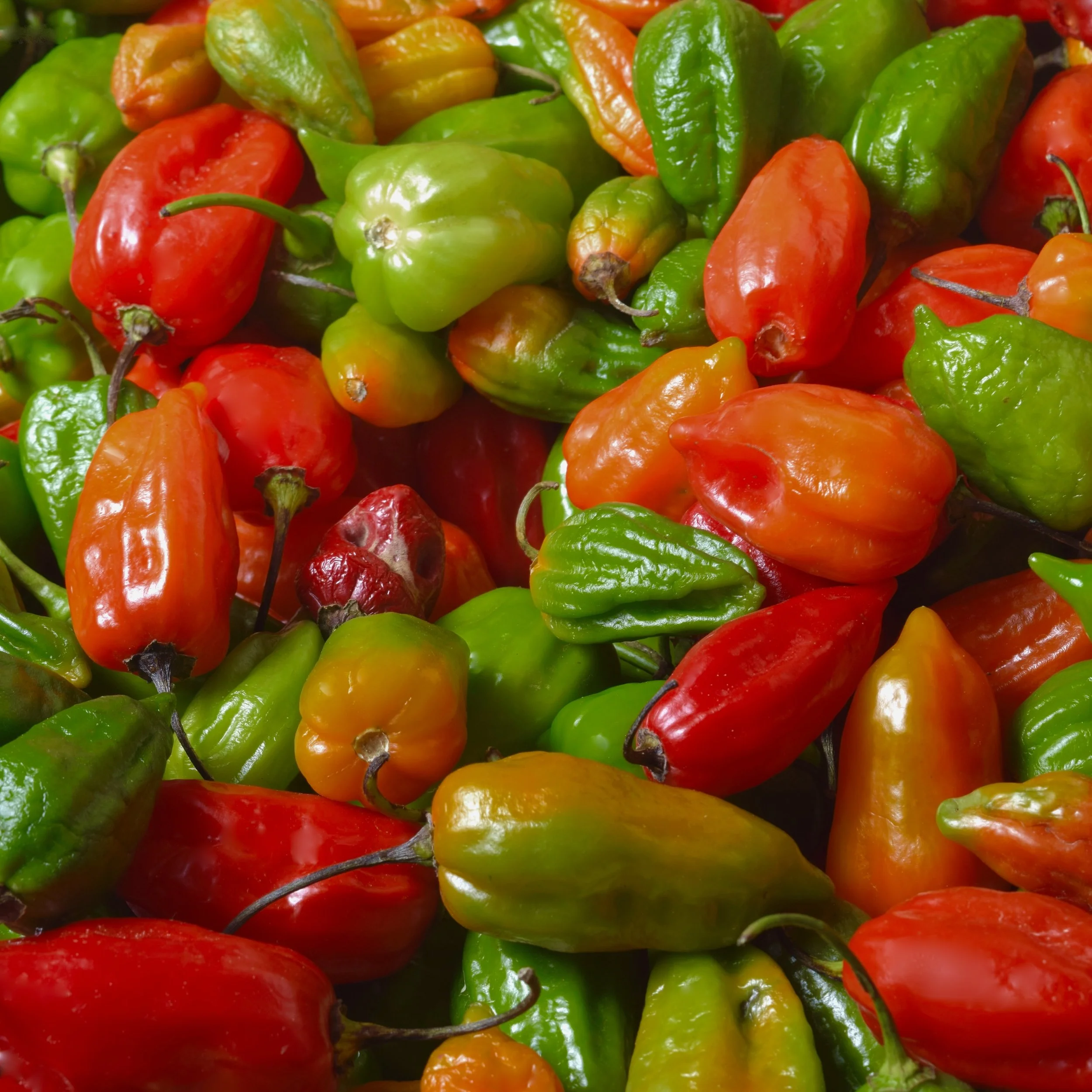Tastes like Mexican?
It’s in the Numbers: A Fresh Look at the Evolution of Food in Latin America
By Peter Rockstroh
There is a Japanese saying that for every new and exciting flavor you find, the joy that you experience adds another day to your life. I believe this to be true. Some flavors are so delightful that every bite provides an invigorating boost that enriches our lives far beyond just the taste itself.
Food and travel go hand in hand, and for many they are synonymous. While on the move you discover new places, meet new people, and sometimes share meals with them. Often, your travel memories are intricately linked to specific meals, many of which you've anticipated for a long time. When traveling for pleasure you usually have the opportunity to savor food, allowing you to engage all the senses while eating.
Throughout my travels I have focused mainly on Latin America. Over the years I have enjoyed discussions about Latin American cuisine with friends, family, and anyone willing to engage in the conversation. We deconstruct dishes to understand how, where, and why they are prepared. I’ve had enriching conversations with botanists about ingredients, the distribution of chili peppers, the ecology of fruiting vines, and the palatability of odd wild birds among many other food-related topics. Whenever possible I’ve slipped into restaurant kitchens to learn how to prepare specific dishes. On more than one occasion I was offered a small table, a glass of beer, and someone to guide me through the recipe.
The culinary universe of Latin America’s tropics is as diverse as its biological landscape, boasting a vast array of fruits, vegetables, tubers, grains, herbs, and spices. Some countries have harnessed this abundance to create signature dishes featuring fantastic combinations of flavors and textures, while others have not.
After years of touring and countless delightful meals, I began to wonder what makes the cuisine of a country so special and sometimes unique, especially when a neighboring country has a much simpler fare despite sharing similar food resources.
Latin America is especially rich in flavorful ingredients. Take Mexico, for one well-known example. This is an enormous country that stretches from the northern pine-oak forests of the Sierra Madre Oriental and San Pedro Mártir to the coastal humid forests, swamps, and mangroves of Pantanos de Centla in Veracruz and the coast of Chiapas States. The country is also influenced by deep ocean currents along the tropical Pacific and the warm Caribbean and Gulf waters of the Atlantic. This combination of geography provides a breadth of land and climate conditions conducive to cultivating virtually any ingredient imaginable.
However, having access to every conceivable tasty ingredient out there does not automatically guarantee an extraordinary meal. To achieve that, you need a recipe.
A recipe represents a successful combination of ingredients and makes food predictable. It allows for consistent replication of taste and texture, satisfying craving - especially for those who always order the same dish at their favorite restaurant. In contemporary industrial terms, a recipe can be thought of as a batch production protocol that outlines ingredients and process parameters. When this protocol lacks specific parameters, it is often deemed a salad with instructions limited to, "chop into bite-sized pieces, toss, and dress.”
Most standard cooking ingredients remain relatively stable at room temperature for a brief period. However, they change in appearance, consistency, and flavor when exposed to heat or cold and these changes occur gradually based on the length of time and temperature of their exposure. Therefore, a good recipe should specify ingredients, quantities, and the conditions in which they will be utilized. This implies that throughout the developmental history of a recipe, contributors must have known how to prepare the dish, understood and documented the procedure, and had the ability to write it down. Additionally, in cultures without written records, much like shamanic knowledge, culinary heritage has been lost as well as risks being lost when the oldest cooks pass away.
I found myself questioning why some countries boast outstanding culinary traditions while others produce simply good food. What made such a significant difference long before the release of the film Ratatouille?
I aimed to establish an ostensibly unbiased method for evaluating the typical food of Latin American countries, allowing me to compare results and potentially identify the factors responsible for differences. In other words, I wanted to create a ranking system considering ingredients, methods, and outcomes that recognizes all aspects that contribute to a recipe's popularity.
Before proceeding, I would like to clarify the term "typical food." I use this term to refer to indigenous recipes that have persisted since Pre-Contact times to the present and are integral to each country's cultural heritage. This term is a somewhat clumsy translation of the Spanish phrase "platos típicos" (typical dishes), which can sometimes overlap with terms describing ancestral cuisine; by contrast, the latter refers specifically to how food was prepared in the past. Under this heading I also include recipes developed during and after colonial times, which reflect the use of local knowledge to conceive a dish which clearly shows local influences.
My interest lies in the recipes that have evolved and adapted, transforming them into the beloved flavors we cherish today.
I researched the "TOP 10 Best Recipes" online from each country’s cuisine across all Latin American countries with substantial information available online. I then evaluated the websites of each country, selecting five lists that appeared to exhibit the least foreign bias, primarily focusing on resources created by national groups. Many foreign websites, for instance, include Tejano and Tex-Mex dishes as authentic Mexican food but–as delicious and popular as they may be–they don’t form part of this evaluation.
From the five most reliable websites for each country, I identified the top five dishes that appeared consistently across all lists. This process resulted in a compilation of national food favorites, representing the tastes of each country. Ultimately, I developed a list of five dishes chosen by nationals, reflecting their favorite recipes.
Next, I analyzed these recipes, noting the number of ingredients and preparation steps involved. I compiled a detailed list of procedures used in the kitchen to prepare each dish and assigned a skill level to each step, with the intention of quantifying the amount of effort required for each recipe.
The evolution of recipes over time reveals how they are edited and refined to become the best versions of themselves, extracting every last drop of flavor from their ingredients. While there is no fixed rule, a well-developed recipe for a classic dish may have undergone more than a century of modifications to achieve its mature form.
Using these data points, I created a simple formula to represent the effort involved in preparing each dish, facilitating relative comparisons between different recipes.
To derive comparative values, I employed straightforward arithmetic where each step multiplies the number of ingredients by the assigned skill level for that process. For example, if the instruction is to toast five spices until fragrant, the calculation would be: Five (number of spices) x two (difficulty level for this task) = 10 points.
Skill Level Rating Scale
1. Extremely easy (weighing, measuring, and sizing) - Accessible to anyone.
2. Easy, but requires attention (chopping mushrooms) - Basic knife skills.
3. Requires dexterity and some training (de-boning a chicken) - Advanced skills.
4. Cooking with precision (pastry, chocolate, emulsions) - Advanced skills plus practice.
For example, a Beef Wellington consists of at least eight ingredients and demands technical skill and multiple layers of preparation. Its formula might look like this:
1. Making the Duxelle (finely chopping mushrooms): 1 x 2 = 2
2. Making the crepes: 3 x 2 = 6
3. Preparing the meat (searing and resting): 1 x 3 = 3
4. Assembling the Beef Wellington: 4 x 3 = 12
5. Baking the Beef Wellington: 1 x 3 = 3
6. Preparing Sauce Bearnaise: 4 x 4 = 16
Total Rating: 42
For comparison, let’s analyze a traditional spicy pumpkin seed soup from Southern Mexico and Guatemala called Pepián:
1. Dry roasting the seeds and nuts for the sauce: 8 x 1 = 8
2. Cleaning, roasting, and cooking the chile peppers: 4 x 2 = 8
3. Cutting a chicken into portions and roasting it: 1 x 2 = 2
4. Roasting onions, tomatoes, peppers, and spices: 8 x 1 = 12
5. Pureeing roasted vegetables, cooking with breadcrumbs and water: 8 x 1 = 8
6. Adding the chicken and cooking until tender: 2 x 2 = 4
Total Rating: 42
LatAm’s Contemporary Cuisine Quantified
The effort to document a recipe indicates its inherent value. Nobody takes the time to record a recipe unless it is worth preserving for future generations or, at the very least, for next Friday's gathering. When a recipe lists 25 ingredients and has been made for two centuries or more, it is highly likely that every ingredient plays a crucial role.
While I am uncertain about how frequently contemporary Latin American recipes have been updated, it is clear that a recipe comprising two dozen ingredients, with consistent proportions across numerous publications, has likely established itself as a cultural standard.
In addition, while examining the data, it became obvious that the favorite dishes are a measure of popularity and not a recognition of the chef’s creativity and sophistication. A taco cart in any place of Mexico can serve award-winning food, yet the closest it will get to a Michelin star will be the logo on the recycled tires on his cart.
I began my evaluation of typical cuisines in Mexico, that yielded the following results:
I wouldn't presume to call this type of analysis actual number crunching, but rather more akin to second grade arithmetic with numbers within the shoe size/room temperature IQ range.
However, the results are very clear and show that some countries invest more time, effort and ingredients to prepare their favorite fare than others.
If I compare, for example, the countries of Central America, the spectrum of ingredients is very similar, with a heavy influence of corn and beans. A similar situation is reflected among the three northwest Andean countries of Colombia, Ecuador, and Peru. They have a similar geophysical structure, with a central high plateau, Amazonian lowlands on one slope, and the Pacific slope on the opposite side of the Andes. All three have an amazing wealth of ingredients and share a large percentage of them, and still there is a big difference between their typical dishes.
So, if it is not geography nor ingredients, what are the decisive factors ?
Between C.E. 1500 and today, several key events had a profound impact on Latin American cuisine, shaping traditional diets and food practices. Here are some of the most significant:
1. The Columbian Exchange (1492–1700s)
◦ Introduction of Old World Ingredients: European colonization brought wheat, rice, sugarcane, coffee, onions, garlic, citrus fruits, grapes, livestock (cows, pigs, chickens), and dairy products.
◦ Spread of Native Crops: Latin American staples like corn, potatoes, tomatoes, chili peppers, cacao, beans, and cassava were introduced to Europe, Africa, and Asia, transforming global cuisine.
◦ Chile peppers were widely grown in the Americas, long before it's discovery. They were introduced to Africa as early as 1493; India in 1542 and Hungary in 1569
◦ Tomatoes from South America dispersed (probably by birds and humans) and had reached Central America by the year 1,000 and were grown in Italy by 1549. They appeared for the first time as ingredients in an Italian cookbook in 1692.
◦ Sugar was introduced to America during the early 1500s. It grew much better in the New World and rapidly became a favorite crop in the Caribbean and surrounding countries. The “success” of these plantations was based on slavery, yet sugar found a way into the heart and stomach of Latin American countries. Typical desserts of this region include high sugar and milk toffee-like concentrates and combinations of these with other sweets.
◦ Novel Cooking Techniques: Europeans introduced pots and pans, baking, dairy fermentation (cheese, butter), and frying methods, influencing dishes such as empanadas and tamales, soups and stews. While many families welcomed the new spicy food the locals prepared, other families insisted that only European ingredients had to be used but adapted to these new options later, around the turn of the century (1492 - 1500). (Stellar & Carrasco, )
The introduction of new foods, previously unknown to local ethnic groups was readily accepted. Most of the domesticated animals adapted easily to small farm conditions and were rapidly incorporated into the local menu.
Although some techniques brought improvements to the Latin American kitchen, processing food was already quite advanced by 1492. Many soups and sauces were prepared from curry-like pastes of concentrated flavors, produced with a molcajete and a grinding stone. The molcajete is a three-legged sloped stone bed, made from volcanic rock, on which a spindle-shaped rock lies, the grinding stone (piedra de moler). It works like a mortar and pestle, but over a larger area. The three legs represent the three seasons of man: childhood, youth and advanced age.
I don't know the importance of this tidbit of knowledge, but since the guide told us about it, it comes up every time I see this appliance.
I think there is a scale of complexity for normal every day fare, that has evolved and continues to do so, shaping the taste by the circumstances every time one cooks.
The simplest form of cooking is exposing food items directly to fire. This was, without a doubt, the origin of cooking, and is still done today (BBQ or whatever it is called), either over flames or under embers.
It is mainly the selection of ingredients that generates the taste of the outcome. These dishes are appreciated for the taste of the item, rarely the recipe. Examples of these are beef, fish, fruits, corn on the cob and others.In tropical America, the favorite game species probably were various game birds, White-tail Deer (Odocoileus virginianus), Peccary (Tayassu tajacu and T. pecari), Lowland Paca (Cuniculus paca), and other local game species. This type of food and its preparation was already depicted in the scrolls and Mayan codicees. The archaeological records show depictions of these game species being consumed since at least during the Archaic Period (7,000 - 2,000 BCE) (Coe, 1993; Coe 1994).
The next steps in cooking evolution must have been adding more taste to the items being heated. On the other hand were the efforts to heat the food without burning it, which led to heating it in containers.
Once these hurdles were overcome and food could be heated in a clay and later metal pot, it isn’t hard to imagine arriving at the concepts of soup and sauce. After that, it is creativity and passion that fueled the evolution of culinary arts, all the way to the George Foreman Grill and the Air Fryer.
Other dishes that were already prepared by 1492 were tortillas and tamales. Tamales represent regional cooking at its best: a tasty, fine-tuned corn base, not too thick, not too runny; a properly spiced morsel of chicken or pork in the middle and dexterity to wrap them tightly in corn husk or palm leaf, to be cooked and unwrapped at the table.
Mesoamerican and South American staple crops like corn, potatoes, tomatoes, beans, squash, and chiles were introduced to Europe, Africa, and Asia, where they rapidly became favorites. While Old World kitchens benefited from these new ingredients many regional crops remained poorly known until the mid-1900s.
By 1500, it was already known that Mayan agriculture consisted of cornfields interspersed with beans, chiles and different species of squash. Jungle patches were selectively logged to favor higher densities of food species, such as Ramón or Breadnut (Brosimum allicastrum), and Zapote or Red Sapote (Manilkara sapota).
The introduction of Old World domesticated animals like horses, cattle, and pigs changed hunting and food collecting programs.
The independence of South American countries (~1810 to 1830), led to a flourishing of native recipes, using local ingredients and new cooking techniques introduced from Europe. The use of metallic containers to heat food in different liquids opened the spectrum of possibilities to regional cooks. Although clay pots can be used to boil liquids, they cannot resist the wear and tear of a metallic pot.
From preparation to supervision and evaluation of their dishes, metallic pots made controlling the process much easier and ensured batch to batch consistency.
The level of complexity of Latin American cuisine reached its current state in great measure because the combination of pots and pans and, for example, the use of oil to fry meat and vegetables. That sparked a creative wave of new dishes in the whole area, particularly of finger food. Protein deep fried in a layer of dough, for example, is a combination found throughout Latin America, sweet and savory, spicy, mild and sometimes crazy. This group of recipes includes Mexican tamales, Guatemalan tostadas, Colombian and Argentinian empanadas, Belize and Honduran Bay Island conch fritters, and many more.
The first two centuries of the Columbian Exchange had a profound impact on cultural practices, choice of crops and processing options of the different food items. The indigenous recipes that existed by then must have had flavors that were as fascinating for the European settlers as vice versa. Using a hit-and-miss approach, both groups struggled to establish valuable cultivation areas of their staple food items, traditional and recent discoveries.
2. The Encomienda System & African Influence (1500s–1800s)
◦ The Spanish and Portuguese established encomiendas, forcing indigenous people to work on plantations that produced sugar, cacao, and other crops.
◦ The Atlantic Slave Trade (1500s–1800s) brought African culinary influence, including:
◦ Ingredients like okra, plantains, yams, and peanuts.
◦ Cooking techniques such as frying (e.g., tostones in the Caribbean) and stewing (e.g., feijoada in Brazil).
◦ African laborers played a key role in growing and processing sugar, coffee, and the influence of the African culture, mainly on coastal settlements, was very powerful. The use of coconut and coconut milk, mixed seafood and vegetables stews gave birth to some of the most interesting dishes Latin American countries have to offer.
The African influence on Latin American cuisine has had and still retains its bold influences. The mixture of spicy ingredients, fruit and animal protein be it fish, beef, pork, or poultry, always results in powerful propositions enjoyed by many.
3. Independence Movements & National Identity Formation (1810–1900s)
◦ Countries gained independence from Spain and Portugal, leading to the development of national cuisines that blended indigenous, European, and African influences.
◦ European immigration (Italians, Germans, French) influenced food traditions:
◦ Argentina, Uruguay, Brazil: Italian pasta, pizza, and milanesas.
◦ Mexico: French bread (bolillos) and pastries.
◦ Chile & Peru: German beer and sausages.
◦ Local dishes were formalized and blended into national identities (e.g., Mexico’s mole poblano, Argentina’s asado, Peru’s ceviche).
With the independence and regional pride as boosters for the creation of national dishes, the creative process was also fueled by the many holidays, that inspired iconic dishes such as those served on the Day of the Dead in Mexico.
Patriotism and public recognition gave birth to the first chefs. The less-than-glamorous caricature of the cook was substituted by the glamorous, spoiled Men in White that command today’s TV kitchens with iron glove, walking around with a frown and puckered lips as he contemplates his next culinary coup, where his slaves do his dishes, and sponsors wet their pant when he is angered.
4. Industrialization & Urbanization (1900s)
◦ Processed foods (canned goods, refined flour, sugar, and oils) became widely available, changing traditional diets.
◦ Migration from rural areas to cities led to the rise of street food culture:
◦ Mexico: Tacos al pastor (influenced by Lebanese immigrants).
◦ Brazil: Feijoada became a national dish in urban areas.
◦ Peru: Chinese immigrants contributed to the creation of chifa cuisine (fusion of .Chinese and Peruvian food).
Poor urban development planning and the diversification of the food additives market were the pillars of progress of the food industry during the latter half of last century. Of course the word progress in this context should be taken with a grain of low-sodium salt substitute.
Betty Crocker had just emerged from the ashes of a burnt down Applebee’s. She was wearing a red and white check dress and carrying her first box of ready to make brownies. Just add water! Batteries not included. America was about to learn that you don't need to be a cook to be able to clutter your intestines with super-processed wheat flour and sugar.
A tidal wave of ready-to-eat choices was about to drown America in FDA food colors and so many allergens they could make radiation test rats break out in hives. Favorite food color: chewing gum purple. Favorite artificial flavor: tutti frutti. Favorite chewing gum base: any random petroleum-derived substance.
And so on.
5. The Green Revolution & Agribusiness (1950s–1980s)
◦ High-yield farming methods increased production of wheat, corn, and rice, but led to:
◦ Decline in indigenous crops like amaranth and quinoa in favor of European grains.
◦ Dependence on large-scale agribusiness and monoculture crops.
◦ Loss of biodiversity and traditional farming methods.
◦ Processed foods and fast food chains (McDonald's, KFC) spread across Latin America, impacting traditional diets. The same industry also generated a very high demand for cheap beef, which in turn generated large scale deforestation for cattle pastures
6. The Latin American Food Renaissance (1990s–Present)
◦ Revival of indigenous ingredients and techniques, led by chefs and activists promoting:
◦ Pre-Contact ingredients: Quinoa, amaranth, heirloom corn, native potatoes.
◦ Traditional cooking methods: Open-fire cooking, fermentation, stone grinding.
◦ International recognition of Latin American cuisine.
◦ Peruvian gastronomy (e.g., ceviche, Nikkei cuisine) became globally famous.
◦ Mexican cuisine was recognized as an Intangible Cultural Heritage by UNESCO in 2010.
◦ Farm-to-table movements emphasize sustainability and indigenous food sovereignty.
Usually, when I have some questions regarding food and it's preparation I turn to the good old CIA for answers. The CIA (Culinary Institute of America) publishes some of the best cookbooks I know, but on this occasion, I consulted information of the other CIA (yes, that one). The other CIA publishes the CIA World Factbook, an online almanac, regularly updated, with relevant information of every country in the world. It has, of course, information on safety and political stability (or lack thereof), but also very accurate data on population, religion, race and gender.
While perusing this digital publication I found a very interesting feature that breaks down the percentage of indigenous population of each country being profiled.
During the past 500+ years, it has been the indigenous population that has maintained the collective memory of the ingredients and preparation of their traditional recipes. During the first wave of immigrants from the Old World to Latin America in 1493, the first Spanish settlements had the choice of eating local ingredients and local recipes or insisting on eating traditional Spanish food.
The second option is what today is known as dieting.
It is understandable that the spicy food of Mexico, Central America, and South America must have been initially overwhelming to the European palate, although there must have been many cooks thrilled with the possibilities of using new spices adjusted to prevailing tastes. There's no doubt that many of the Latin American desserts are of European origin, with a Latin American twist (e.g., caramel flan, buñuelos, pound cake), but when it comes to main dishes, it has been the indigenous population that has kept the recipes alive through some historical periods when white European foodies were probably considered potential ingredients.
To this day, when many indigenous dishes are part of hundreds of millions of lunches and dinners of Latin American families, during weekends these same families travel for hours to find a place where they prepare, as they say in Spanish: el verdadero McCoy, (= the real McCoy) referring to a traditional dish prepared by an indigenous cook.
This thoughts led me to assume that the higher the percentage of indigenous people, the higher the chances of maintaining the traditional cuisine alive.
Lo and behold, putting the data shown in the graph shown below–i.e., a given country’s culinary complexity score and percentage of indigenous population as part of the total population–we generate some interesting findings. What seems obvious when examining the graph is that Latin American countries with relatively high percentages of indigenous peoples have the highest culinary indices, or culinary complexies if you will.
Conclusion
Latin American cuisine has evolved from one based on commonly available indigenous foodstuffs during the Pre-Contact era to quite another over the past five centuries via colonialism, African influence, European immigration, industrialization, and modern “fusion” food movements. Despite major disruptions over time, there is a growing effort to revive traditional foods and cooking techniques to ensure that indigenous and local flavors remain a vital part of the region’s culinary identity. It would be very interesting to determine if some semblance of a complete culinary heritage can be restored by cultural anthropologists working with local cooks, since many of these losses in recipe diversity have occurred fairly recently.
Enjoy!
Country Scorecards - North to South
Costa Rica; tasteatlas.com, ticotimes.net, exodustravels.net, afar.com, boondockinsrecipes.com
Panama; insanelygood.com, tasteatlas.net, boondockinsrecipes.com
Colombia; llantollanto.com, foodadventuresabroad.com, grandtravel.com,
Venezuela; tasteatlas.com, mothersalwaysright.com, travel.com, foodandwinewithlove.com, etichotels.com
Ecuador; food.nomadicboys.com, tasteatlas.com, bbcgoodfood.com, insanelygoodrecipes.com, thebambootraveler.com
Peru; insanelygoodrecipes.com, howtoeatinperu.com, Allrecipes.com, travelfoodatlas.com
Brazil; bbcgoodfood.com, foodandwine.com, allrecipes.com, olivemagazine.com, realfood.tesco.com
Bolivia; tasteatlas.com, chefspencil.com, boonedocking.com, verygoodrecipes.com, bolivianita.de
Paraguay; tasteatlas.com, chefspencil.com, theculturetrip.com, 196flavors.com, internationalliving.com
Uruguay; tasteatlas.com, chefspencil.com, boonedocking.co, 196flavors.com, travelunicorns.com
Argentina; gypsyplate.com, bbcgoodfood.com, boonedocking.com, tasteatlas.com, munchery.com
Chile; chefspencil.com, boonedockingrecipes.com, insanelygoodrecipes.com, recipeswithhash.com, allrecipes.com.
References
Coe, M. D. 1993. The Maya. Smith & Hudson. 223 pp.
Coe, S. D. 1994. America’s First Cuisines. University of Texas Press. 288 pp.
Nunn, N. and N. Qian. 2010. The Columbian Exchange. Journal of Economic Perspectives. Vol. 24, No. 2. Spring 2010. pp. 163–188.
Staller, J. E. and M.D. Carrasco (eds.). 2010. Pre-Columbian Foodways (1): Interdisciplinary Approaches to Food, Culture, and Markets in Ancient Mesoamerica, DOI 10.1007/978-1-4419-0471-3_1. Springer Science+Business Media.
All content ©Exotica Esoterica LLC® and ©Peter Rockstroh 2025.
